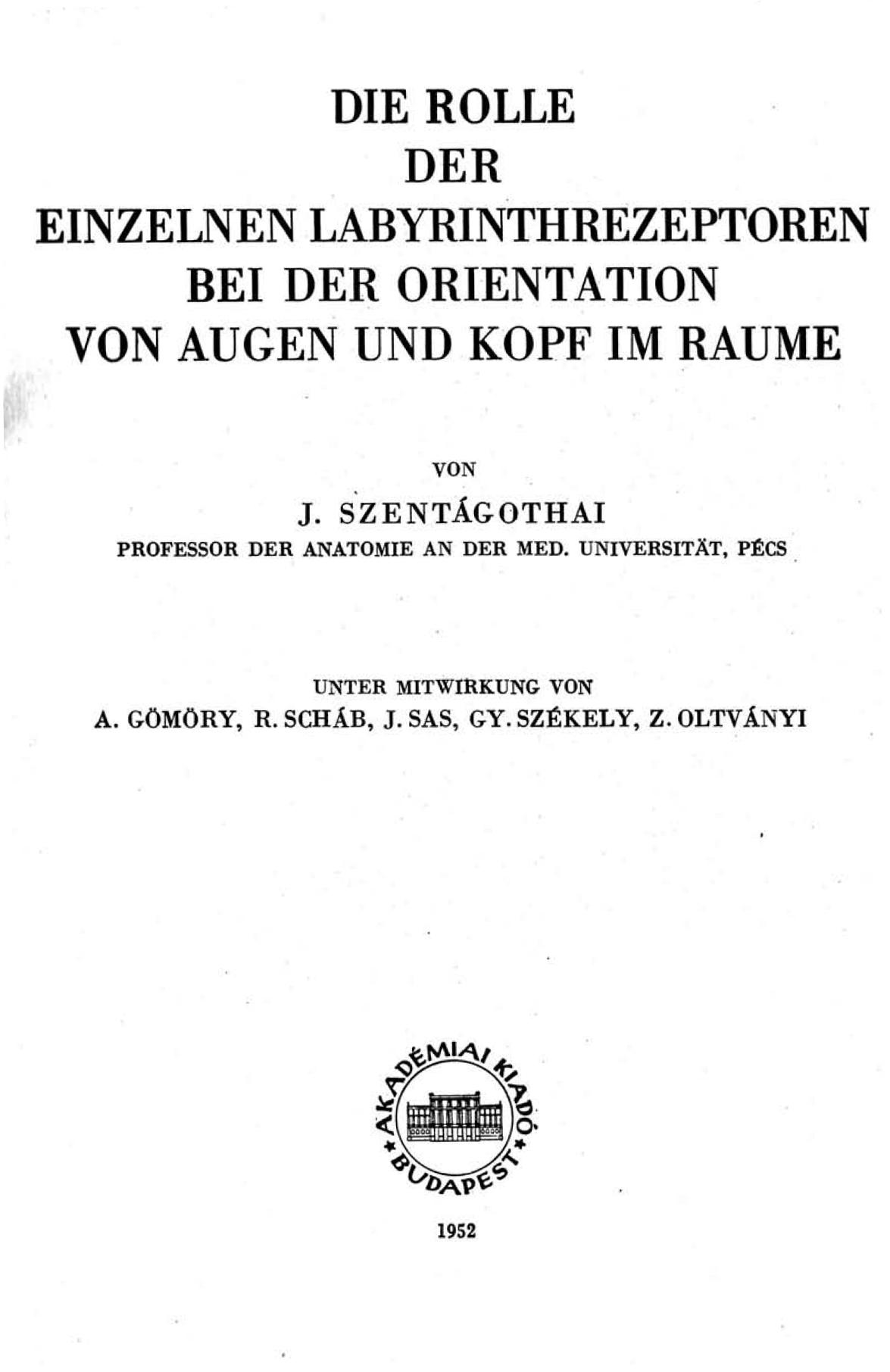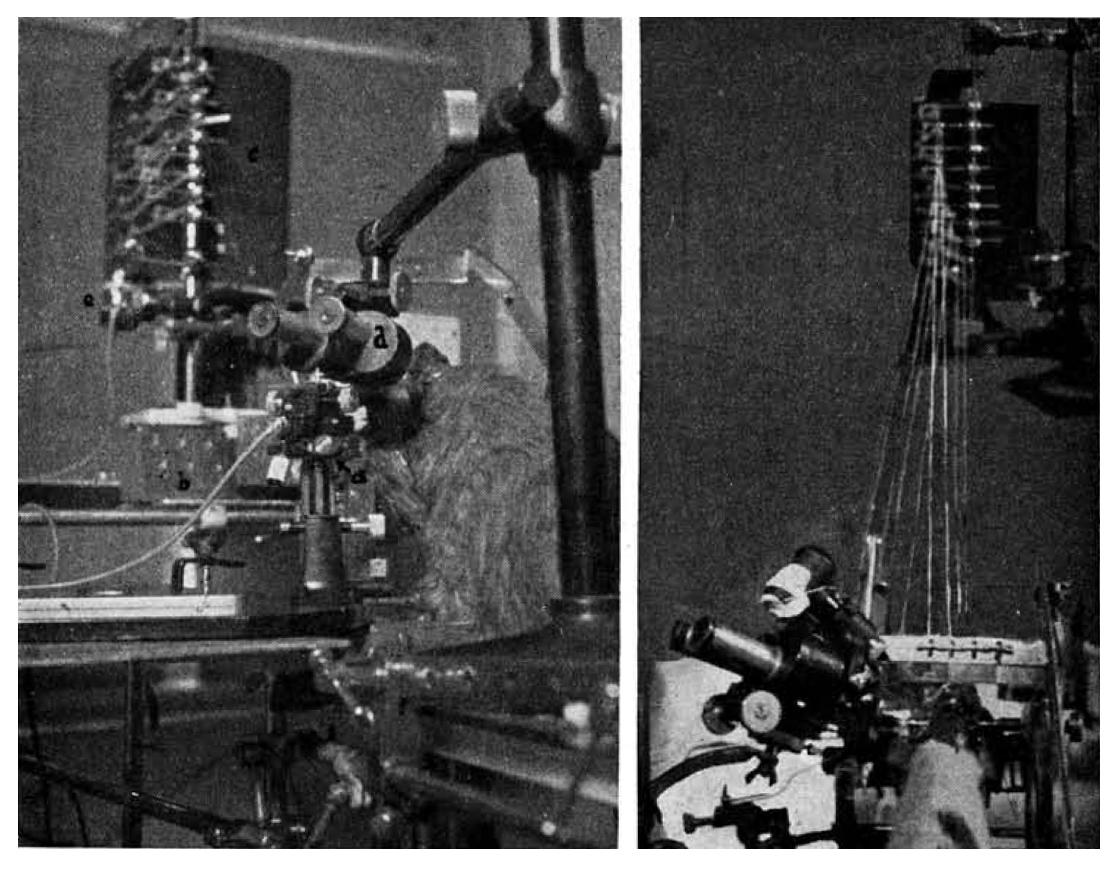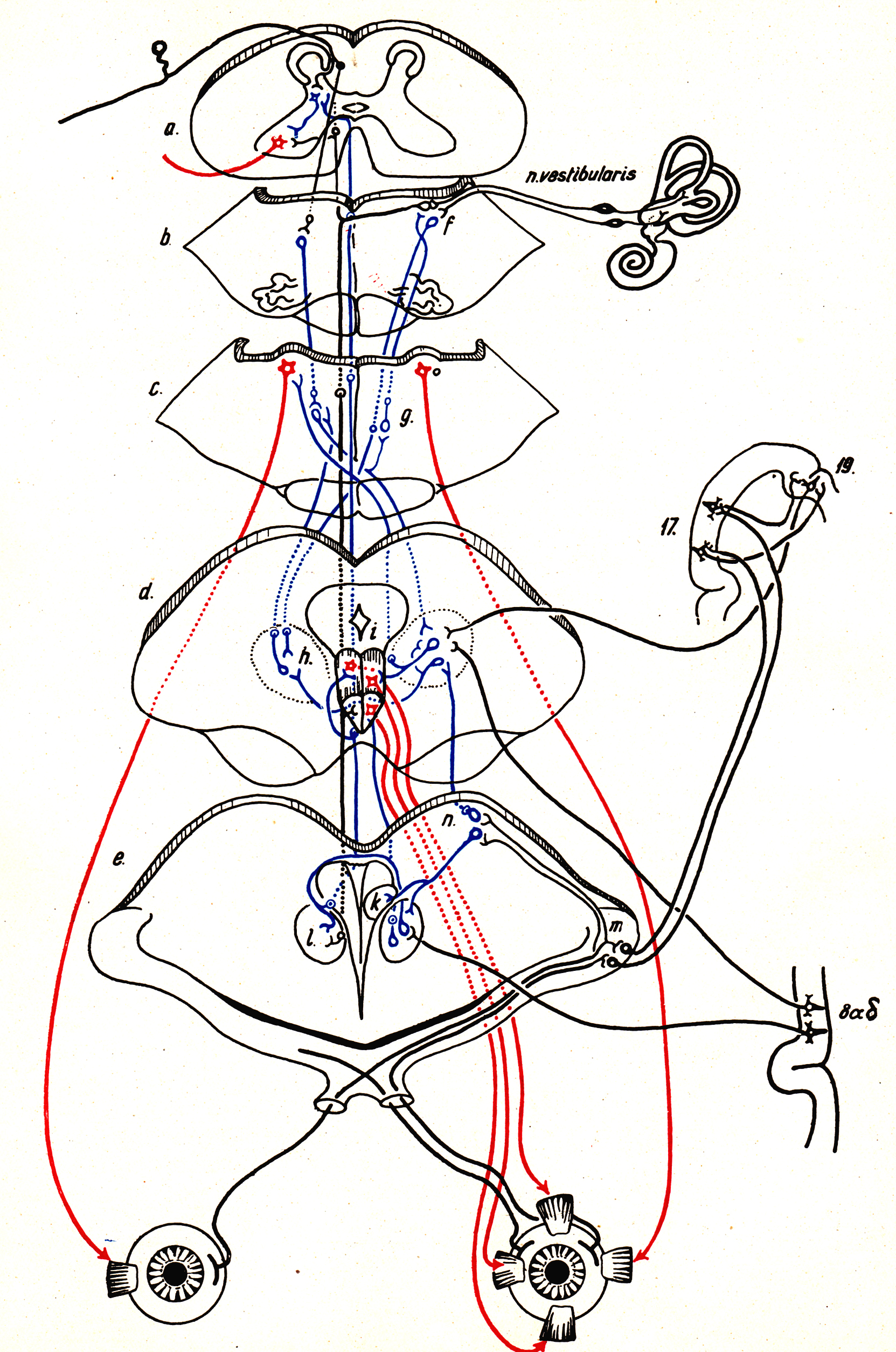Szentágothai's creative ingenuity became clearly visible in a three-year series of experiments, in 1948-50, in which he resolved the function of individual receptors of the labyrinth in the act of spatial orientation.

Front page of the book published in 1952
by the Akadémiai Kiadó,· (Budapest)
As he mentioned in the preface of his book, it was an inadvertent decision to embark upon this work during the construction an Horsley-Clark type instrument which would use to place microlesions in selected sites of the brain for forthcoming investigations of degenerating synapses. He tested the exactness of the instrument on the oculomotor nucleus studying the functional representation of the 6 eye muscles with the aid of degeneration technique. The instrument was fine, but the results revealed that some muscles were innervated from the ipsilateral nucleus, others from the contralateral nucleus; and this seriously contradicted to what was accepted in the contemporary literature.

Arrangement of the experimental instruments: modified micromanipulator of Zeiss-Péterfy, smoked paper kympgraph attached to 8 electrodes, Marey-tombour, stereo microscope etc.
Having controlled the reliability of his data, Szentágothai recognized that the results fitted with Hőgyes's suggestion about the possible correlation between muscle contractions and the assumed stimulation of a semicircular canal. Szentágothai became excited over the harmony of his data and Hőgyes's suggestion, and was ready to answer the challenge: stimulate individual labyrinth receptors and record the activity of 12 eye muscles. A daring project never occurred to anybody before. In the midst of ruins in a postwar country, he had begun to collect the necessary compliances: a smoked paper kymograph, a bunch of styluses sufficient for the 12 muscles, a Marey tambour and a number of other instruments.

Simplifyed scheme of anatomical structures responsible for eye movements. Afferents from receptors and higher centers are black, (those from cerebellum are not shown). Supranuclear schwitch centers are blue, motoneuros are red. Spinal cord cross section (a) shows C1-3 with afferents an neurons responsible for neck-reflexes. b) Cross-section at the pons-medulla border including the vestibular nuclei (f). c) The pons with n. abducens (o) and with reticular formation (g). d) Cross-section of the midbrain including the oculomotor nucleus (i) and reticular formation (h). e) Section at the midbrain – diencephalon border with the interstitial nucleus (l) and Draskewitsch nucleus (k); lateral geniculate nucleus (m) and n) pretectal region. Numbers at the right side on cerebral cortical schemes refers to the corresponding Brodmann areas.
Then found a valuable co-worker (A. Gömöry) who with his marvellous dexterity was capable of making in vivo preparations of the labyrinth with its receptors ready for stimulation. With the aid of a micropipette filled with saline solution introduced through a small hole into the semicircular canal, Szentágothai could make the endolymph flow to and back with a gentle blow, and the stylusese show the contraction of the active muscles on the rotating drum. The other end of the tube was connected to a Marey tambour and this indicated the moment of blowing the endolymph and made the recording of the reflex delay possible. With this simple set up he was able to distinguish the fast reflex conveyed through a three-neuron arc from the slow reflex mediated by the reticular formation.
The maculae received mechanical stimuli by moving the otolithic membrane to and fro over the macula with an homemade micromanipulator. The tonic responses of muscles were recorded on the rotating drum and the functional representation of muscles could be established. Up-to-date studies could not add relevant details to the roll of the labyrinth played in the act of orientation.
This short "back-review" of a few early works characterizes Szentágothai's scientific attitude as a great Observer of Nature: he got excited about phenomena he did not understand, and did not relaxed before solving them.
(by G. Szekely)
